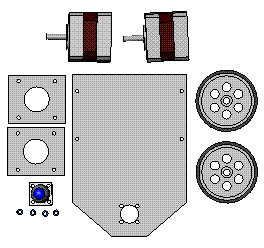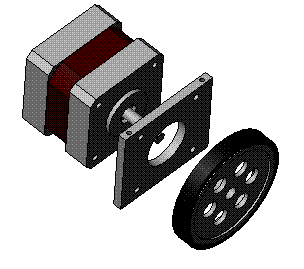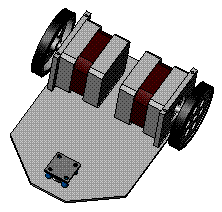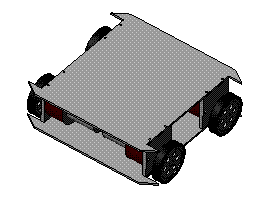Get ready for all your circuits to be blown by "I, Robot," an adrenaline rush of a movie that actually excites your mind as it excites your senses.

In 1950, Issac Asimov -- one of the most famous, inventive and humanistic writers of science fiction -- set down the Three Laws of Robotics in his series of short stories, "I, Robot."1. A robot may not injure a human or, through inaction, allow a human to come to harm.
2. A robot must obey orders given to it by a human, except where it would conflict with the first law.
3. A robot must protect itself, as long as that protection does not violate either the first or second law.

Ever since Asimov first wrote those words, many films about robots have used his laws as a blueprint and then theorized what would happen if a robot started to evolve and deviate from its hardwired programming."I, Robot," the movie, takes that premise and then leaves the rest of the robot movies in the dust with its involving murder mystery plot. "I, Robot" has a challenging, complex story structure, characters whose pasts fit together like a jigsaw puzzle and a comforting meld of the familiar and the futuristic in its Chicago 2035 setting. Two characters were taken from Asimov's stories -- robotics pioneer Dr. Alfred Lanning (James Cromwell) and a younger version of Dr. Susan Calvin (Bridget Moynahan), who specializes in the psyches of robots.

Will Smith plays Det. Del Spooner (who is not a character in Asimov's stories), just about the only cop on the police force who doesn't believe robots are completely harmless -- an attitude that doesn't play well with his boss, Lt. John Bergin (Chi McBride).On the eve of a major rollout of the next generation of robots -- the NS-5's -- Lanning apparently commits suicide and leave behind a holographic message for Spooner. As Spooner pursues breadcrumbs of information, his investigation pushes him closer to the realization that his worst fears could be closer to the truth than anyone could ever imagine.

Smith is absolutely spectacular as the haunted detective. His pumped-up body from "Ali" is still intact, but so is the wit, sensitivity and emotion he has revealed in his other films. Everything he has done has culminated in this mysteriously complex character.At times, the stunts are a little too far-fetched for any human to make believable, but who cares? It's cool, and so are the almost translucent-faced robots -- one of whom, Sonny, is almost irresistable with its childlike curiosity and human-like need for approval. But can it be trusted?Moynahan does an adequate job with the limited role she has been given, playing the robot-believer to Smith's robot-doubter. But this movie is really about Spooner and the robots.Asimov devotees should know that that the movie only takes ideas and characters from the book and those ideas are combined with a previously written script titled "Hardwired."Is it possible that robots could actually evolve to the point where they could come up with their own interpretations of the 3 Laws, or is that just an invention of screenwriters? "I, Robot" is a provocative, exhilarating peek into an unsure future that serves as sobering warning against letting technology take too much control over our lives.
source









































